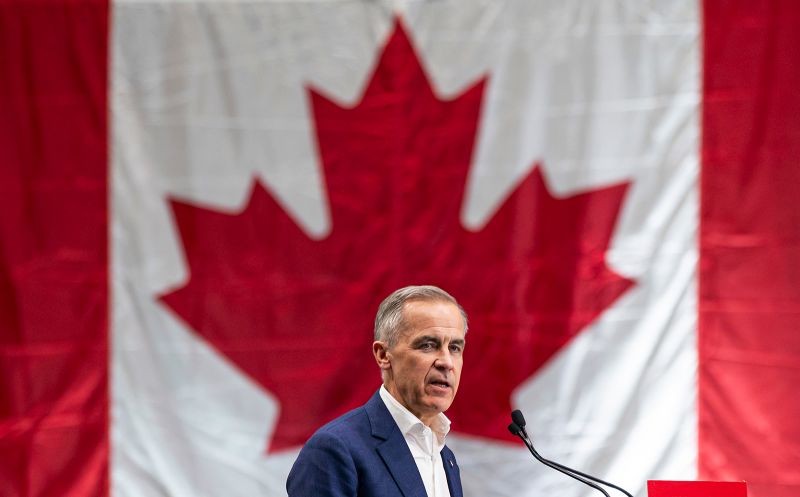
Canada’s Liberal Party, led by Prime Minister Mark Carney, is on course to win the country’s federal election, Canadian media projects, following a campaign overshadowed by provocations and tariffs from US President Donald Trump.
With votes still being counted, CBC News said it is too soon to say whether it will be a minority or majority government – a party needs 172 seats to form a majority.
Canada’s uneasy relationship with the United States deeply influenced the tenor of this year’s campaign. Trump’s tariffs against Canadian exports pose a grave threat to the country’s economy, and his threats to annex Canada as “the 51st state” have enraged Canadians of every political persuasion.
“I reject any attempts to weaken Canada, to wear us down, to break us so that America can own us,” Carney told reporters in late March. “We are masters in our own home.”
Though Canadians have a diverse array of parties to choose from on their federal ballots, the main contest is between the incumbent Liberals, led by Carney since March, and the Conservative opposition, led by longtime parliamentarian Pierre Poilievre.
Carney, a former banker, became prime minister in March after his predecessor Justin Trudeau resigned from office in the wake of dire polls that suggested a stunning loss to come in a federal election.
Trudeau announced his plan to resign in January while facing grim polling figures, a serious cost of living crisis and an internal revolt in his cabinet.
The numbers began to shift in the Liberals’ favor as Trudeau hit back against US tariffs during his last days in office. After winning the party leadership contest in a landslide, Carney continued to spearhead Canada’s opposition to Trump’s annexation threats and trade war.
Carney had never held political office before becoming prime minister. The former central banker touted his experience shepherding Canada’s economy through the 2008 financial crisis and Britain through Brexit, to appeal to Canadians seeking solace from the gloomy economic headwinds caused by the storm of tariffs announced by the White House.
The idea that Canada needs to forge its own path outside of US influence has been central to the prime minister’s messaging since he took office.
Carney pitched himself throughout the campaign as an experienced professional from the political center who can steward Canada’s economy through a period of profound turbulence.
“I understand how the world works,” Carney told podcaster Nate Erskine-Smith in October. “I know people who run some of the world’s largest companies and understand how they work. I know how financial institutions work. I know how markets work … I’m trying to apply that to the benefit of Canada.”
Carney has pledged to “build things in this country again” to make Canada less reliant on the US: new homes, new factories, and new sources of “clean and conventional energy.”
“My solemn promise is to stand up for Canadian workers, to stand up for Canadian businesses,” Carney said in March. “We will stand up for our history, our values and our sovereignty.”
This is a developing story and will be updated.